GL Releases
Voice Recorder Emulator for VoIP Air Traffic Control
20th, Apr 2018
Welcome to another April 2018 issue of GL Communications' Newsletter providing information and insight into our latest ED-137 Voice Recorder Emulator referred to as MAPS™ ED-137 Recorder Emulator
Overview
Air traffic control centers are required to provide continuous "ground/ground" and "ground/air" voice communication recordings with synchronized flight related data, for establishing “air traffic incident” chronology, replay, improving safety, audits, statistics, and training purposes.
ED137/4B defines inter-operability standards for the next generation VoIP Air Traffic Recorder. These next generation recorders are specially designed for all traffic control towers and centers to simplify the recording, archiving, and playback of voice communications.
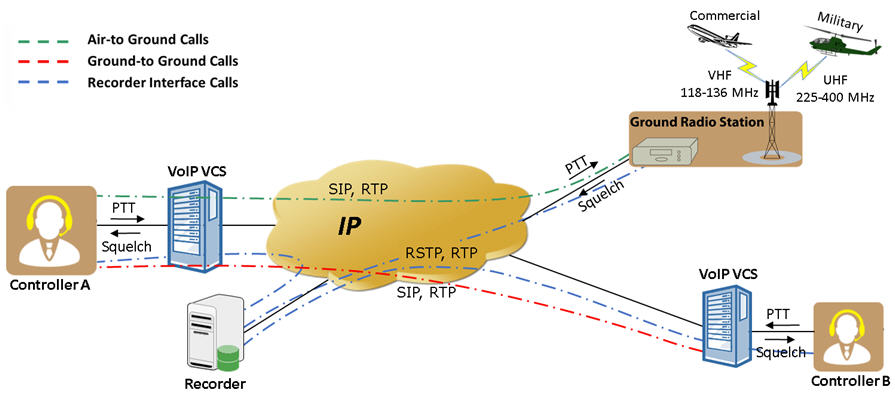
MAPS™ ED-137 Recorder Emulator
MAPS™ ED-137 Recorder Emulator software emulates voice recording and replay of voice communication for VoIP ATM networks per EUROCAE ED-137B Volume 4 Standards. This software is an addition to the already existing test suite for VoIP ATM networks that includes, MAPS™ ED-137 Radio Emulators and MAPS™ ED-137 Telephone Emulators.
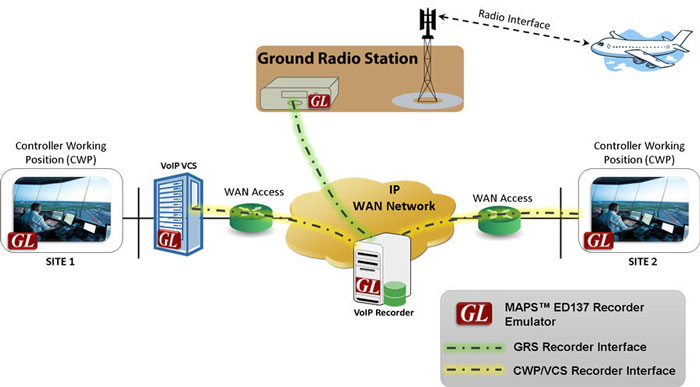
The software is designed to simulate Recorder Interface for both Air-to-Ground (AG) and Ground-to-Ground (GG) calls at Controller Working Position (CWP), Ground Radio Station (GRS) and Communication Recorders endpoints.
MAPS™ ED-137 Recorder supports Real Time Streaming Protocol (RTSP) to establish, terminate and maintain media sessions, which deliver media recording servers. Active recording requires an established session (i.e. a certain number of parameters that are exchanged between entities prior to any recording). CWP/VCS, Radio and Recorder use RTSP for such sessions. As RTSP relies on a transport layer protocol (TCP or UDP), these entities use SIP to exchange capabilities and connection information (i.e. IP address, port number, and transport protocol).
The following communication scenarios can be tested -
- Simulate GRS/CWP entity to place AG Calls towards Communication Recorders to test recorder functionalities
- Simulate CWP entity to place GG Calls towards Communication Recorders to test recorder functionalities
- Simulate VoIP ATM Recorder entity to receive and record voice from CWP/VCS to verify proper communication flow between the entities
- Simulate VoIP ATM Recorder entity to receive and record voice from GRS to verify proper communication flow between the entities
Important Features
- Emulates ED-137/4B Recorder interface at CWP, GRS and Recorder endpoints
- Simulates Recorder interface for multiple CWPs and Radios from single instance of MAPS™
- Simulates Recorder interface for both Air-to-Ground and Ground-to-Ground calls
- Supported codecs include G711 A-law, Mu-law and G.729
- Supports simulating multiple recording servers from single instance of MAPS™
- Scripts to automate PTT and Squelch operations on AG recording sessions
- Recorder node automatically records voice on each session to audio files
- Customization of parameters for multiple CWP/GRS entities to emulate an AG/GG call recording session
- Options to easily add custom call record data properties (like Caller, Callee, Frequency) and operations (like PTT, Squelch, Call Hold)
- Up to 200 RTSP sessions can be generated or recorded simultaneously
- Call Record Data of each session is stored in CSV format
- CLI/API access for seamless integration with 3rd party test tools
- Highly flexible architecture for custom testing scenarios
Typical AG and GG Call Recording Sequence
A typical ED-137 Recorder session between CWP-to-Recorder or GRS-to-Recorder simulation is shown below.
MAPS™ ED-137 Recorder simulates complete call flow and provides message decodes for each session. The PTT, and Squelch (Record) events are also updated in the call graph indicating the time at which the event occurred.
Use Case Scenarios using MAPS™ ED-137 Recorder
Simulate AG/GG call recording towards Recorder
In the following use cases, MAPS™ ED-137 Recorder can be configured as CWP and/or GRS and test the real VoIP ATM Recorders (DUT – Device Under Test). The software generates Air-to-Ground or Ground-to-Ground calls to the DUT to verify the media delivery and recording sessions at the DUT.
The following events are supported during the call simulation -
- Voting - this event can be applied on a session to send RTSP messages indicating Rx stream selected by the voting algorithm
- Simultaneous SQU - if applied on a session, simulates recording simultaneous SQU received at VCS on different frequencies
- Start Squelch -this event can be applied to indicate squelch detection (at VCS) to recorder
- Call Intrusion - if this event is applied on a session then RTSP messages are sent to simulate call intrusion scenario on GG call
- Call Transfer - if this event is applied on a session then RTSP messages are sent to simulate call transfer scenario on GG call
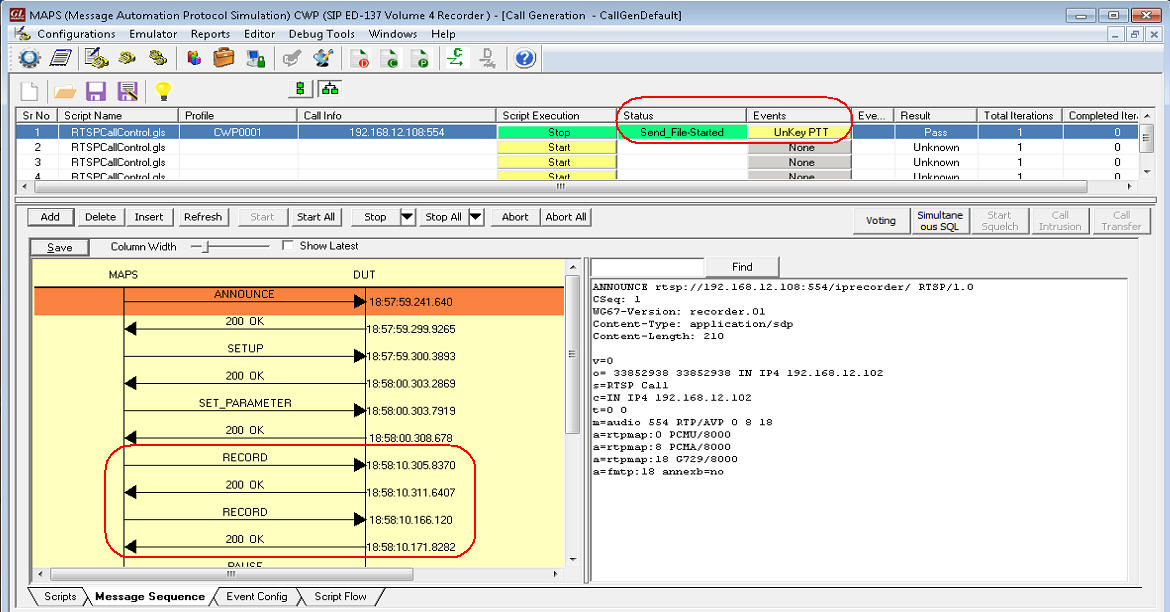
Call Generation at CWP towards Recorder
Testing Recorder Interface of CWP/VCS and GRS
In the following use cases, CWP or Voice Communication Systems (VCS) vendors can use MAPS™ ED-137 Recorder (simulating Recorder) to test the Recorder interface of their equipment. In this case, MAPS™ ED-137 Recorder is configured as the Recorder to test the Recorder interface of CWP or GRS (DUT).
MAPS™ also supports performance and automated stress/load testing capabilities simulating hundreds of recording sessions over the Recorder interface. All the recorded files are automatically saved at the Recorder terminal in GL’s proprietary file format (*.glw).
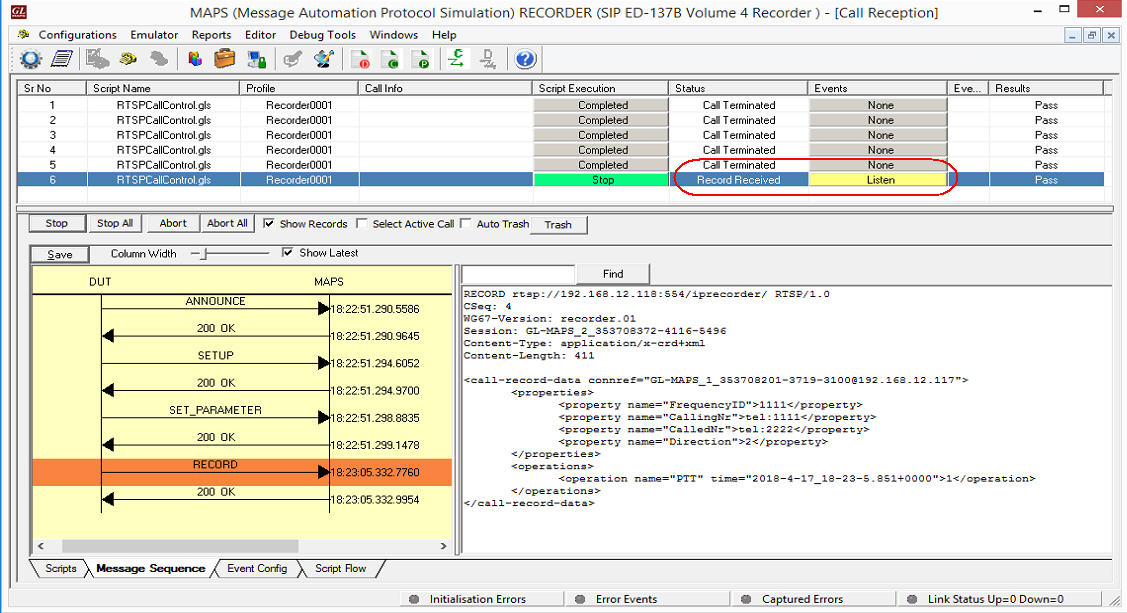
Voice Recording at Recorder Terminal
The Call Record Data for AG and GG calls are saved in CSV file format. Call Record Data entry for each recorded call in the CSV file will also contain the recorded audio file. These audio files are in GL’s proprietary format (GLW). All audio files in GLW file format can be automatically converted to PCM/WAV files using GL's Audio File Conversion Utility, and playback these audio files using utilities such as Goldwave or Adobe Audition.
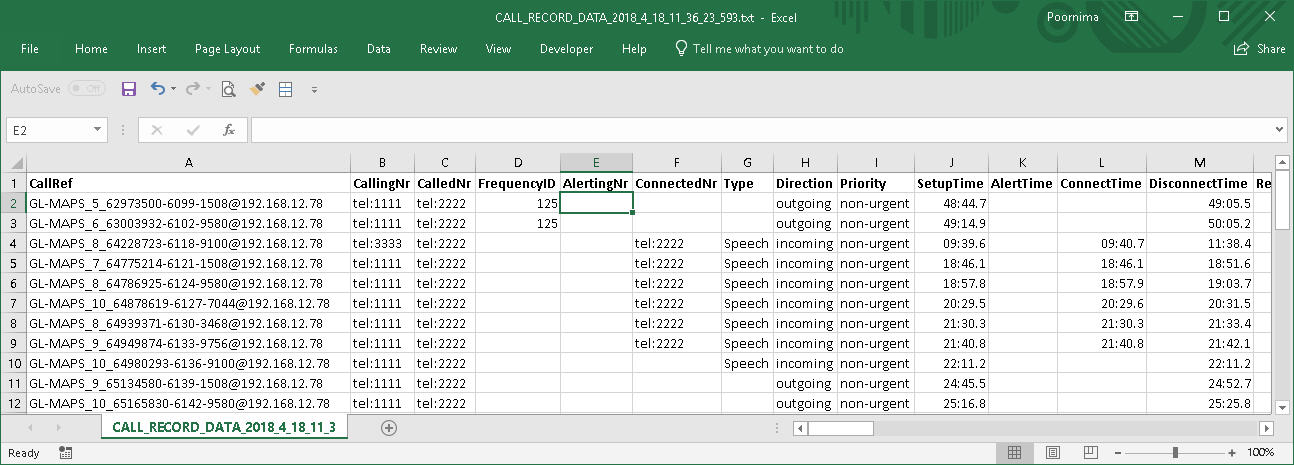
Call Record Data CSV File
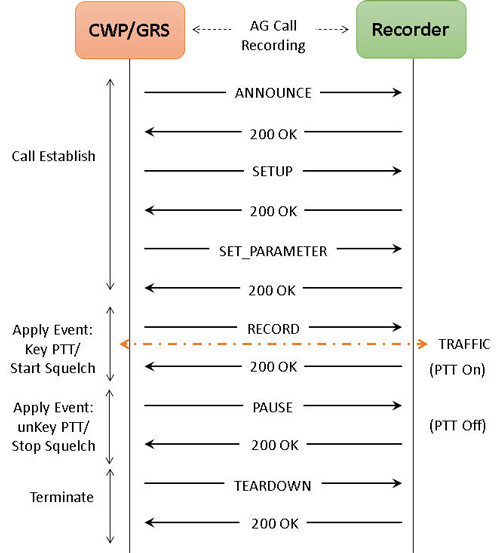
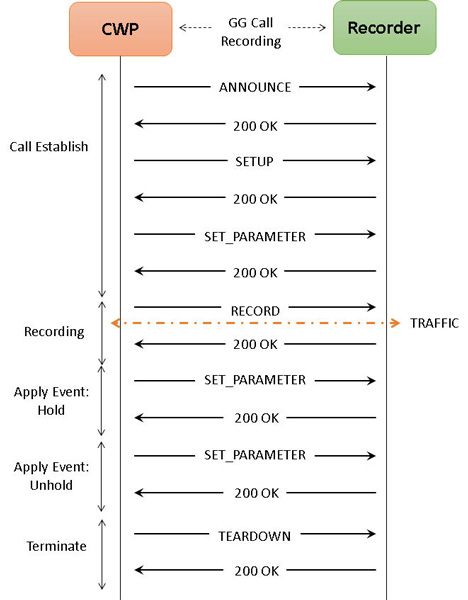
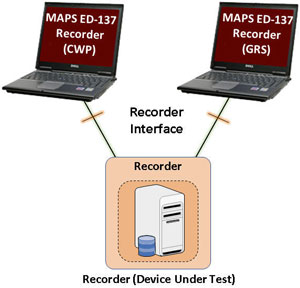
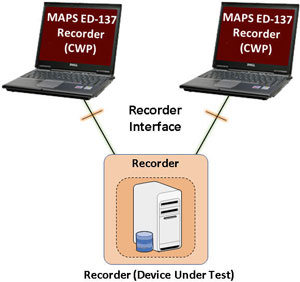
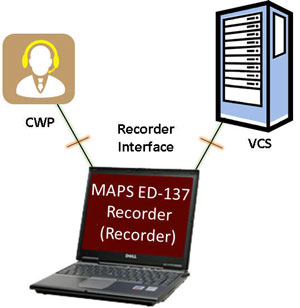
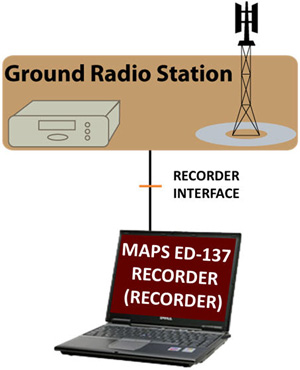
 Back to Newsletter Index Page
Back to Newsletter Index Page